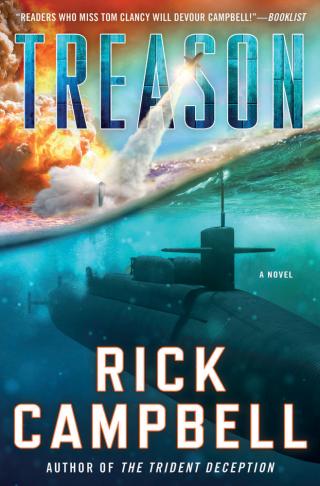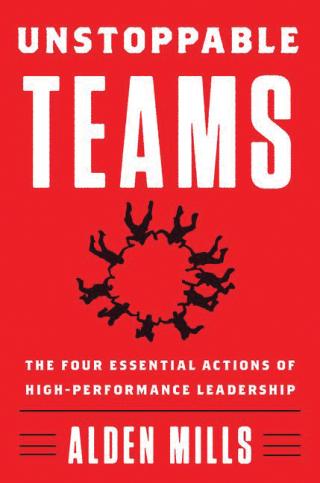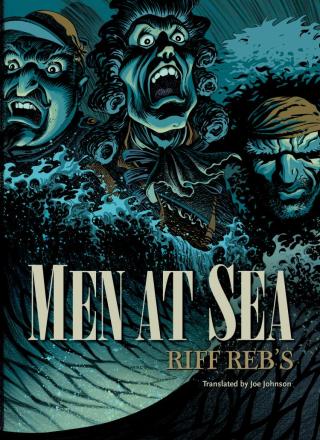TOPGUN: An American Story
Dan Pedersen. New York, NY: Hachette Book Group, 2019. 305 pp. $28.
Reviewed by Lieutenant Commander Graham C. Scarbro, U.S. Navy
In his memoir, TOPGUN: An American Story, retired Captain Dan “Yank” Pedersen intertwines his personal coming of age as a jet pilot with the professional birth of the storied Navy Fighter Weapons School: TOPGUN (one word, all caps). From the deadly skies over Vietnam, to unauthorized dogfights off the California coast, to secret showdowns with stolen MiGs in the Nevada desert, Yank’s book has plenty of material to reinforce TOPGUN’s image as the elite school for America’s “best of the best” fighter aviators.
However, readers expecting a simple brash tale of super egos and combat heroism will find Yank’s story to be one of normal men with extraordinary drive. Mixed with the “goods,” Yank does not omit the “others” from the story: fallen shipmates, broken relationships, long days, lost loves, and ignominious defeats.
The memoir lives up to its subtitle as an American story of confronting the difficult lessons of Vietnam, while also exploring the lives and careers of Yank’s mentors, comrades, and fellow TOPGUN instructors and founding members.
Evincing the TOPGUN mantra of “humble, knowledgeable, and approachable,” Yank fills the book with the names of those who impacted his career for the better: his early role models, veterans of World War II and Korea; his fellow “original bros” at TOPGUN, who built an advanced tactics course in 90 days; and those who helped transform “The Course” from an ad hoc schoolhouse in a stolen, condemned trailer into the aviation world’s most well-known graduate-level fighter weapons school.
The book serves as a “who’s who” of midcentury aviation, as Yank crosses paths with aviation legends such as World War II ace and Navy Cross recipient “Geno” Valencia, Vietnam ace Willie Driscoll, hotshot fighter pilot Pete Mitchell, and Air Force luminaries such as Jimmy Doolittle, John Boyd, and Robin Olds.
The book is an enthralling read at a breakneck pace, capturing the speed of aviation development from the late ’50s through the early ’80s. Yank himself goes from flying the groundbreaking but dangerous F4D Skyray to commanding an aircraft carrier armed with brand new F-14 Tomcats, humbly acknowledging his personal role in this era of change while never neglecting to highlight those who shared TOPGUN’s vision of tactical excellence and carried the torch into the modern era.
Readers will sympathize with Yank’s laments over the squandered opportunities, bureaucratic malaise, and short-sighted decision-making that characterized the Vietnam War. Students of aviation history and modern tacticians will nod knowingly as he decries the overreliance on technology, the restrictive rules of engagement, and the drudgery of an apparently forever war that in hindsight seems doomed from the outset to undignified defeat.
However, in the doldrums of the 1970s hope abounds as Yank and his “bros” build from scratch the Navy Fighter Weapons School, effecting a sea change in professional development and tactical acumen that reverberates today, as evidenced by the growing weapons and tactics instructor programs in communities outside naval aviation. In recounting this impact, Yank is quick to highlight the contributions of others, a far cry from the popular image of “fighter guy as prima donna.”
TOPGUN’s mission, Yank says, is to teach the teachers. In this personal and professional memoir, he adds to the TOPGUN manual a new chapter of life, heartbreak, defeat, and ultimately, the redemptive impact a few dedicated people can have. It is in the end a story about renewal and hope for all who dare to be the best of the best and in so doing, improve the world around them.
Lieutenant Commander Scarbro is a TOPGUN graduate and assigned to Strike Fighter Wing Atlantic.
The League of Wives: The Untold Story of the Women Who Took On the U.S. Government to Bring Their Husbands Home from Vietnam
Heath Hardage Lee. New York: St. Martin’s Press, 2019. 336 pp. Notes. Biblio. Photos. $28.99.
Reviewed by Lisa Smith Molinari
Unlike the lugubrious portrayals that dominate Vietnam War history books, Heath Lee’s The League of Wives offers an unexpectedly uplifting account from a previously overlooked perspective. This is the fascinating saga of a group of military spouses who, after being informed that their husbands were being held by the North Vietnamese as prisoners of war or were missing in action, fought those in power for truth and diplomacy and, against all odds, won. Though the Vietnam War would be dubbed “a lost cause,” the battle waged by the brave wives was undoubtedly an inspiring success.
What began with a gathering of 13 grief-stricken Navy wives around Sybil Stockdale’s Coronado, California, dining room table in 1966 grew into “The National League of Families,” with a membership that included thousands of determined POW/MIA wives and official headquarters at 1 Constitution Avenue in Washington, D.C.
To muster the chutzpah to take on government officials and top military brass who had told them to “keep quiet,” the wives had to shed strict military spouse protocol and 1960s cultural norms. These reluctant feminists became brave warriors—relentlessly demanding meetings with U.S. Presidents and diplomats, working with naval intelligence to exchange coded letters with their POW husbands in Hanoi, publicizing the truth about the use of extreme torture by North Vietnamese captors, holding press conferences to criticize the United States’s weak diplomacy efforts, and showing up at embassies in Paris and Stockholm, successfully demanding to speak with North Vietnamese representatives.
The National League of Families formed unexpected alliances to accomplish its objectives. Disgusted with the cover-ups of the Johnson administration, the POW/MIA wives embraced Richard Nixon as President. Unlike LBJ, who refused to meet with them, President Nixon listened to and worked with the women, encouraging National Security Advisor Henry Kissinger to meet with them bimonthly. However, the League also found itself trapped in an uneasy relationship with communist-supporting peace groups because the sympathizers had the ear of the North Vietnamese and could exchange the wives’ letters, packages, and, sometimes, prisoners themselves.
In the end, the diplomatic efforts of the U.S. government, as heavily influenced by the powerful League of Families, led to Kissinger negotiating with the North Vietnamese for the POWs’ release. During the eight years that the North Vietnamese held U.S. prisoners of war, their wives organized and advocated fervently for their rescue, all while grieving, managing households, raising children, struggling financially, experiencing crushing loneliness and mental health issues, and even battling cancer.
Lee deftly tells this well-researched, extraordinary tale by weaving military, political, and cultural history with personal diary entries and quotes from “key influencers” such as Sybil Stockdale, Jane Denton, Andrea Rander, Louise Mulligan, Phyllis Galanti, and Helene Knapp, as well as Kissinger, Nixon, and naval intelligence officer Bob Boroughs. She makes sense of the complicated historical timeline so that readers suffer the tragedies and celebrate the successes with the women—from ominous military officials knocking on their doors with devastating news, to their awkward but heartfelt reunions with their husbands so many years later.
I am a Navy wife myself, and Lee’s The League of Wives left me welling with pride, not only in the brave U.S. prisoners of war and missing in action, but also in the enduring resilience of military spouses who face challenges alone with courage, strength, and honor.
Ms. Smith Molinari’s column, “The Meat & Potatoes Life,” appears weekly in Stars and Stripes and other military newspapers. Her book of the same name will be released by Elva Resa Publishing in November. She’s been a military spouse for 25 years.
Treason
Rick Campbell. New York: St. Martin’s Press, 2019. 400 pp. Index. $27.99.
Reviewed by Captain David Allan Adams, U.S. Navy (Retired)
With Treason, Rick Campbell continues to better what he does best. In this fifth installment of the Trident Deception series, he crafts a sharp, suspenseful narrative infused with authentic enough military-technical details and a strategic plot line that parallels—although with much more intensity—a foreign and defense policy expert’s newsfeed. In doing so, he builds a story that while slow at first, does enough to keep you with him as he puts all the pieces together, picks up pace, and drives the reader through a page-turning sprint to the story’s dramatic conclusion.
Campbell sets the stage for his naval yarn when Russian President Yuri Kalinin finds himself subject to a military coup. Kalinin refuses to risk nuclear calamity by using his nation’s new secret weapon to render the U.S. strategic nuclear arsenal impotent and obsolete. General Sergei Andropov, Russia’s chief of the general staff, and others in the Kremlin do not share his fears and orchestrate his overthrow. At the same time, the President of the United States dispatches his National Security Advisor, Christine O’Connor, to Moscow to negotiate a new nuclear agreement. Instead, she finds herself first subject to Kalinin’s romantic advances, then finally trapped by the coup, and party to a daring escape and U.S. efforts to rescue and reinstate the Russian President.
Campbell briskly delivers the blow-by-blow. Russia’s tampering with U.S. strategic weapons and their invasion of NATO quickly give way to all manner of military operations including intense cyber, SEAL, and submarine battles. New systems—such as a long-range submarine-launched tactical ballistic missile—eventually are brought to bear. It is these graphic accounts of the intricacies of combat and the suspense of U.S. forces driving to overcome adversity that kept me reading.
There are those, however, who might quibble with some of Campbell’s technical forays. Only avid naval and submarine enthusiasts would recognize some of Campbell’s dated references to systems and technologies that no longer are employed—at least not the way he describes—on board U.S. guided-missile submarines (SSGNs). Officers on SSGNs, for instance, no longer find themselves spinning around the No. 2 periscope, as it was replaced by a joy-stick controlled, video-displaying photonics mast when the submarines were converted from ballistic to cruise-missile carrying killers of the deep. This is just one of several, easily correctable, examples. Such technical lapses may not take away from the average reader’s experience, but more research into current submarine systems and operations at the unclassified level certainly could enrich the author’s future efforts.
Campbell’s larger problem is that as the series has gone on, its characters seem to be falling a little flat. Campbell tacitly acknowledges in his author’s note this problem. He nevertheless does not leave us confident that he has a solution. While the character development of National Security Advisor Christine O’Connor makes modest strides, we do not learn much new about characters such as SEAL Lieutenant Jake Harrison or submarine Captain Murray Wilson. To take it to the next level, Campbell’s characters must intrigue as much as his plot lines do.
Campbell nevertheless should be applauded for his ability to lean on his outstanding writing skills and authentic understanding of naval matters in ways that enrich Treason at every turn of the page. His gripping strategic plot lines—that may stretch but do not outrageously overreach the bounds of reality—brilliantly form an international environment for the conduct of military-diplomatic exploits great and small. If Campbell finds more ways to introduce us to complexities of his characters and then places a few more thought-provoking personalities around them, then his best work is yet to come.
For anyone interested in compelling naval fiction, Treason confirms that Rick Campbell still can masterfully generate suspense like no other current military techno-thriller author. That, alone, makes Treason and the other four installments of the Trident Deception series fun to read.
Captain Adams retired in 2016 and is a contributing editor to Proceedings. He commanded the Khost Joint Provincial Reconstruction Team, the USS Santa Fe (SSN-763), and the USS Georgia (SSGN-729 Blue).
Unstoppable Teams: The Four Essential Actions of High-Performance Leadership
Alden Mills. New York: Harper Collins, 2019. 219 pp. Notes. $29.99.
Reviewed by Rear Admiral Paul Becker, U.S. Navy (Retired)
Unstoppable Teams is relevant and quickly readable, with actionable takeaways for military and civilian leaders. It’s an excellent follow- on to Alden Mills’ (a former Navy SEAL and former CEO of Perfect Fitness) 2013 work, Be Unstoppable: The 8 Essential Actions to Succeed at Anything (Cadent, 2013). Mills’ latest title reflects his expanded focus from individual to group leadership.
Through pragmatic storytelling, Mills makes clear that the difference between ordinary teams and “unstoppable” teams boils down to a shared sense of purpose and individuals’ deep commitment to each other. This begs the reader to consider, “How does a high performing leader communicate that purpose, and how do teammates strengthen their belief in each other?” That’s the heart of the book. Mills explains that the answers to those questions begin with personal relationships. He employs a four-letter acronym to emphasize that every unstoppable team has a leader at the nexus of those relationships who CAREs (Connect, Achieve, Respect, Empower). In this modern, sound bite–saturated, Twitter-tuned world of mnemonics, this autological one—CARE—conveys exactly the right message.
A chapter is devoted to each of the letters in CARE. All include Mills’ down-to-earth personal anecdotes. The pages are also full of relevant historical (Shackleton, Lincoln), sports (Navy crew and NCAA basketball), business (his own Perfect Fitness, Marriott, Campbell’s Soup, Johnson & Johnson), government (NASA), and military (Navy BUDS, retired Army General McChrystal’s Joint Special Operations Command) examples, and even 1970s Saturday morning cartoons (Super Friends) to emphasize the continual cycle of those four leadership pillars.
The appeal of Unstoppable Teams’ lessons is that they apply to uniformed or civilian groups of any size. Many leadership books today focus on achievements of renowns who direct thousands of people and billion-dollar budgets. Mills proudly highlights that he led a relatively small business start-up and three SEAL platoons (platoons are typically 16 men—two officers, a chief, and 13 petty officers). That’s not a huge number of individuals on a grand corporate or military scale, but a good-sized place to start demonstrating one of Mills’ maxims, “If you want to be a great team builder, you need to be a great relationship builder first.” Regarding diversity, Mills embraces it in the following way, “Successful teams are based on diversity of thought but not of heart.” Hooyah!
Most readers of leadership books are either entertained by this subject’s science and art or are looking for tips to improve their skills at influencing others to achieve a common goal. Reading Unstoppable Teams achieves both objectives.
Admiral Becker is a former Director of Intelligence (J2) for the Joint Chiefs of Staff. In 2016, the naval intelligence community honored him by establishing a “Teamwork, Tone, Tenacity” leadership award in his honor.
New and Noteworthy
By Lieutenant Brendan E. Cordial, U.S. Navy
Insurgent Women: Female Combatants in Civil Wars
Jessica Trisko Darden, Alexis Henshaw, and Ora Szekely. Washington, DC: Georgetown University Press, 2019. 102 pp. Notes. $16.95.
Recognizing the growing awareness of female service members directly participating in active combat operations worldwide, the authors explore the context and circumstances of female combatants in civil wars in Ukraine, Syria, Iraq, and Colombia. The book presents a nuanced argument that women join and participate in insurgent organizations for reasons similar to, but distinct from, reasons than men, and that their presence and participation can have significant impacts on the conduct and conclusion of civil conflict. Further, their growing participation may have demonstrable effects on the status of women in post-conflict societies.
Given the nascent nature of female-combatant scholarship, the book relies heavily on anecdotal evidence from women directly involved in the civil conflicts discussed, providing a visceral portrayal of a growing aspect of modern conflict.
Of Privacy and Power: The Transatlantic Struggle over Freedom and Security
Henry Farell and Abraham Newman. Princeton, NJ: Princeton University Press, 2019. 248 pp. Illus. Notes. Ref. Index. $29.95.
This scholarly work is a recondite detailing of the complex lobbying, politicking, and bargaining surrounding the development of differing U.S. and European Union data privacy regimes in an increasingly globalized e-commerce market. Of Privacy and Power seeks to add nuance to the standard interpretation of the trajectory of these developments. The prevailing narrative, particularly in the wake of WikiLeaks’ detailing of NSA surveillance, is that a post-September 11 U.S. security apparatus wantonly leverages copious amounts of individual data supplied by social media sites, GPS-enabled smartphones, and electronic financial records while a rules-based European Union seeks to exert the influence of its large market to force adherence to fundamental rights of human privacy. The authors argue that this fails to recognize the disparate actors within each sphere and the competing interests of regulators, politicians, executives, and individuals that have coalesced to influence and determine privacy policy.
Overall, the authors present facts to refine the discussion rather than argue for specific policies, although they make clear they believe more individual privacy protections are warranted. Written specifically for political scientists, which I am not, the book primarily will be of interest to readers enthused by discussions that include “defend and extend, cross-national layering, and insulation actor strategies.”
The Storm on our Shores
Mark Obmascik. New York: Atria, 2019. 256 pp. Illus. Biblio. $26.
A heartbreaking tale of two soldiers who both loved America, but ended up in deadly combat thousands of miles from their homes, loved ones, and even public awareness. Pulitzer Prize–winning journalist Mark Obmascik vibrantly humanizes a little remembered battle of the Pacific war through two men’s experiences in the Battle of Attu, on the westernmost island of Alaska’s Aleutians.
Chronicling the lives of Dr. Paul Tatsuguchi, a Japanese native completing his medical training in California and hoping to raise his Christian family in the United States, and U.S. Army First Sergeant Charles Laird, the son of West Virginia coal miners who joined the service to escape a life of dust-filled lungs, Obmascik explores the extraordinary circumstances that forever intertwined these young men. Present toward the end of the Battle of Attu, Laird throws the grenade that killed Tatsuguchi and his comrades. Afterward, Laird discovers a journal that Tatsuguchi kept detailing the closing days of the battle—and that U.S. propagandists were keen to keep hidden from public view. Ultimately, an elderly Laird seeks reconciliation and closure with Tatsuguchi’s surviving family. An outstanding story of both the horrors of war and the incredible power of pride, forgiveness, and comradery.
Men at Sea
Riff Reb’s, translated by Joe Johnson. Annapolis, MD: Dead Reckoning, 2019. 123 pp. $24.95.
This eerie presentation of classic sea stories is a chilling reminder of the severity and harshness of the sea. In our era of seeming technological dominance over the elements, this gripping graphic novel commands an appropriate respect for the inexorable power of the sea.
Admittedly, reading these stories left me uncomfortable—but this is an effective indicator of the quality of Reb’s artistry and narration. Fans of the macabre should thoroughly enjoy this riveting graphic novel.
Lieutenant Cordial has served as a division officer on board the USS Iwo Jima (LHD-7) and San Jacinto (CG-56). He currently is attending Surface Warfare Officers School and is slated to serve his first department head tour on board an Arleigh Burke–class destroyer.









